Knowing the degree of maturity, it is not difficult to help your whiskered friend develop fully and provide him with good care and proper nutrition. Quality of life and attention from the owner will prolong the cat's life.
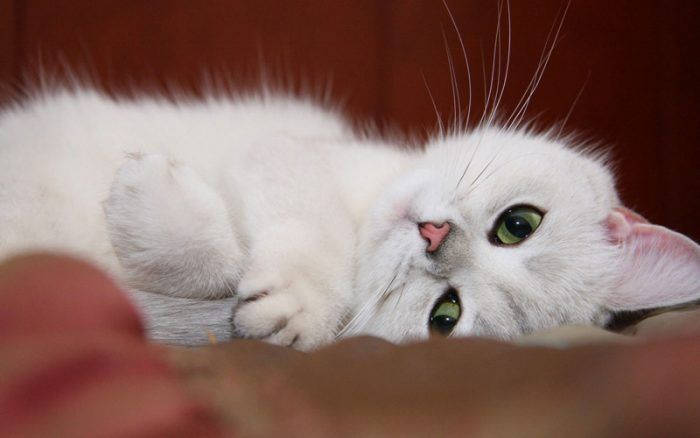
- Age of a cat by human standards
- Approximate ratio
- Why know a cat's age
- Periods of a cat's life
- RELATED PRODUCTS
- Hill's Science Plan Adult Canned Cat Food with Salmon, in pate form
- Hill's Science Plan Adult Dry Cat Food, with Duck
- Hill's Science Plan Wet food for sterilized cats 6 months to 6 years, with trout
- Hill's Science Plan wet food for sterilized cats 6 months to 6 years of age, with turkey
- Age-matched principles
- Life span of cats and its extension
- How do cats and dogs actually age in relation to humans?
- Can you increase a cat's longevity?
- Long-livers in the cat world
- Long-lived breeds
- Record breakers
- How to prolong a cat's life
- How old are the cats and how to calculate their age
- What does the longevity of cats depend on
- How to determine the exact age
Age of a cat by human standards
How long has your cat lived in terms of human years? Is it a teenager, an animal in its prime, or already an old man? If you've ever wondered these questions, our article will be helpful to you.
You've probably heard that 1 year of a pet's life goes for seven human years. In the case of cats this is not true. The age is directly related to the speed of maturation – in childhood, any living creature grows as fast as possible. The difference in the age of humans and cats is due to the difference in life expectancy.
Every month of a kitten's life is equal to 2-3 human years. In childhood, the ratio is 1:12, increases to 1:15 by one year, then gradually begins to slow down to a ratio of 1:5. A table of matching ratios will help guide you. These ratios are based on emotional and social differences specific to a particular period.
| Age of cat | Compliance Ratio | Human age |
|---|---|---|
| 1 month | 6–7 | 6-7 months |
| 2 months | 5–5,5 | 10-11 months |
| 3 months | 8–8,6 | 2-2.2 years |
| 4 months | 15–15,5 | 5-5.2 years |
| 5 months | 19,2–20,4 | 8-8.5 years |
| 6 months | 28–30 | 14-15 years |
| 7 months | 25,7–26,5 | 15-15.5 years |
| 8 months | 24–24,75 | 16–16,5 |
| 1 year | 18–19 | 18-19 years |
| 2 years | 12,5–13 | 25-26 years |
| 3 years | 10–11 | 30-33 years |
| 4 years | 8,75–9,25 | 35-37 years |
| 5 years | 8–8,6 | 40-43 years |
| 6 years | 7,1–7,6 | 43-46 years |
| 7 years | 6,4-6,7 | 45-47 years |
| 8 years | 6,25–6,63 | 50-53 years |
| 9 years | 6,1–6,44 | 55-58 years |
| 10 years | 6–6,3 | 60-63 years |
| 11 years | 5,6–5,9 | 62-65 years |
| 12 years | 5,4 | 65-68 years |
| 13 years | 5,2–5,46 | 68-71 years |
| 14 years | 5,1–5,2 | 72-73 years |
| 15 years | 4,9–5 | 74-75 years |
| 16 years | 4,75–4,8 | 76-77 years |
| 17 years | 4,5–4,6 | 78-79 years |
| 18 years | 4,4–4,7 | 80-85 years |
| 20 years | 5 | 100 years old |
Approximate ratio
Each year of a cat's life is equivalent to several years of a human's life, but the ratio varies at different stages. When there are no calculations at hand, you can roughly estimate the age of the animal using the following rules:
For example, a tailed animal is 10 years old. By human standards its age is 56 years. Let's add 24 (because the animal is already 2 years old) and the result of multiplying 4 (from the third year every cat's year is equal to 4 human years) by 8 (10 – 2 years, which we have already taken into consideration). We get 56.
It's a pretty rough calculation that allows you to determine who is in front of you: still an adult or already an elderly pet. If you need to understand a more exact ratio, it is better to use a ready calculation with the coefficients given above.
One well-known way to calculate how old a cat is is to multiply by 7. That is, in the first year the cat is 7 years old according to human years, in the second year it is 14, in the third year it is 21, and so on. This is not entirely true, because at one year old a cat is already quite independent, which cannot be said about a seven-year-old child. Also, 20-year-old cats are much more common than people who are 140 years old. Thus, the theory of multiplication by 7 is far from the truth.
Why know a cat's age
There are many reasons why people need to know a cat's age. First, to make the pet's life as comfortable as possible and take proper care of it: an older animal needs as much attention as a kitten. This includes regular visits to the vet, and the right food, and activity of the cat.
Secondly, owners should take their cat's age into account when planning for their future. Moving, the birth of a child – all these are serious changes in life, which cannot but affect the cat. Moreover, they often cause a lot of stress, which affects the health and behavior of the cat. And in order to minimize it and not to traumatize the animal, owners should start preparing the pet in advance or even put something off for a while.
Finally, those who are going to take a cat from a shelter should learn about how long cats live. Since in this case there is an opportunity to choose an animal of any age, it is worth understanding how long a small, adult or elderly cat will live in the house. Perhaps someone can become the owner of a quadruple friend for a few years, and someone for a longer period.
Periods of a cat's life
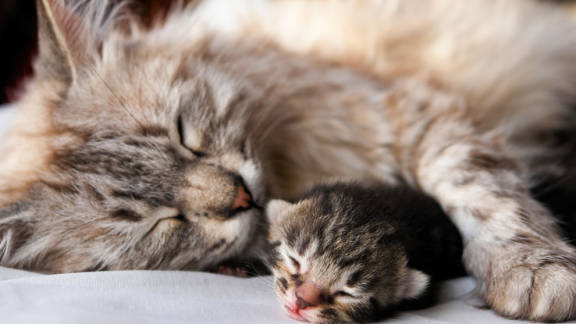
Infancy. The period from the birth of a kitten until it is six months old. In the first week and a half, blind cubs are mostly sleeping and sucking milk. Then their eyes already open, and they begin to explore the world.
From two months of age, kittens are sufficiently independent, they actively interact with their environment and learn quickly. At this age, they begin to feed on their own, respond to their owner, and are taught to go to the litter box.
Until they are three to four months old, kittens usually stay with their mother, and then they are reunited with their new families.
Adolescence. This period lasts from six months to two years. The animals go through puberty, become fully independent, and at one year, the female is able to become pregnant and give birth. Although it is better for the health of the pet if it happens not earlier than 18 months.
Youth. This is the most active period of the pet's life, lasting from 2 to 6 years. He is still interested in the world around him, he is curious and ready to explore his surroundings. And there are no health problems yet, unless, of course, there have been congenital diseases or the animal has contracted an infection.
After 6 years, most purebred cats are no longer used in breeding, although with good care, pets can bear offspring for another one to three years.
Maturity. Lasts from 7 to 10 years. Cats are still awake and full of energy, but behave more calmly and reservedly.
Older age. From 10 to 14 years. If there are no chronic diseases, the pet is not bad. However, he already needs more time to rest, activity decreases sharply. In addition, various caprices may appear, for example, in food, as well as problems with going to the litter box. Animals at this age prefer to choose quiet and peaceful places to sleep, often close to human ones.
RELATED PRODUCTS
Hill's Science Plan Adult Canned Cat Food with Salmon, in pate form
Hill's Science Plan Adult Dry Cat Food, with Duck
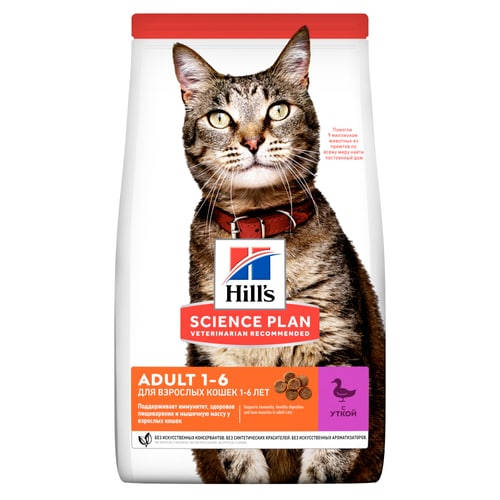
Supports immunity, healthy digestion and muscle mass in adult cats
Hill's Science Plan Wet food for sterilized cats 6 months to 6 years, with trout

Mature Cats (1-7 years), Kittens (up to 1 year), Low Activity and Overweight, STERILIZED CATS
Hill's Science Plan wet food for sterilized cats 6 months to 6 years of age, with turkey

Spayed cats are three times more likely to be overweight and have bladder stones. Hill's™ Science Plan™ Hill's™ Science Plan™ Sterilised Cat Young Adult (for sterilised cats) promotes the balanced development and meets the special nutritional needs of sterilised cats. Contains a clinically proven antioxidant complex and unique weight control formula. Unique Weight Control Formula promotes fat burning and muscle strengthening.Controlled levels of minerals to support urinary tract health.Easily absorbed ingredients for optimal absorption.High quality ingredients. 100% quality, consistency and taste assurance.
Age-matched principles
There is an opinion that in order to calculate the age of a cat according to human standards, it is enough to multiply it by seven. In fact, this approach is valid only for animals three to ten years old.
They mature and grow old at a completely different pace than humans.
- There is no formula for cats under three years of age.
- A three-year-old animal reaches about the same level of development as a human at 25-30 years of age.
- From three to five years of age, this figure increases by seven each year.
- From five to twelve years old, it increases by 4.
- After twelve years, each year counts as 3.
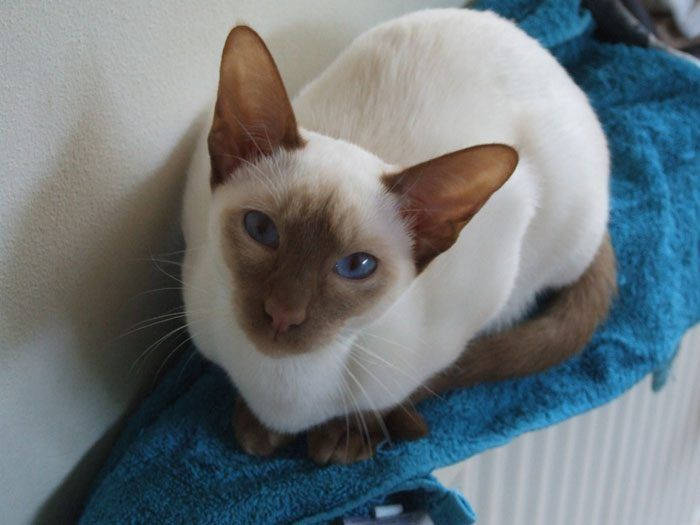
Life span of cats and its extension
There is a pattern in nature: the smaller the animals, the shorter their lifespan. Cats are an exception in this regard – they live relatively long for their size. They usually manage to live up to fifteen to twenty years.
The oldest according to the Guinness Book of Records is 38 years old (about 145 years by human standards).
Among the factors that determine the longevity of these animals are the following:
- Breed. For example, snow-shoes live an average of 11 years, American Bobtails – 13, Scottish – 14, Persians, Sphynxes and British – 15, Maine Coons and Kuril Bobtails – 16, Tiffany – 18. Records of longevity are considered to be Siamese, Tai and American Shorthaired, which often live up to 20 years.
- Lifestyle. Movement is a very important necessity for the animal. Passive pastime shortens its life.
- Nutrition. An unbalanced diet has a negative effect on the overall condition of the body. Negative impact has both lack and excess of certain substances.
- Sexual activity. Unsterilized cats and cats should be able to exercise their sexual instincts – otherwise the hormonal background in the body is disturbed.
- Psychological state. Stress and emotional stress lead to neurosis and shorten the life span.
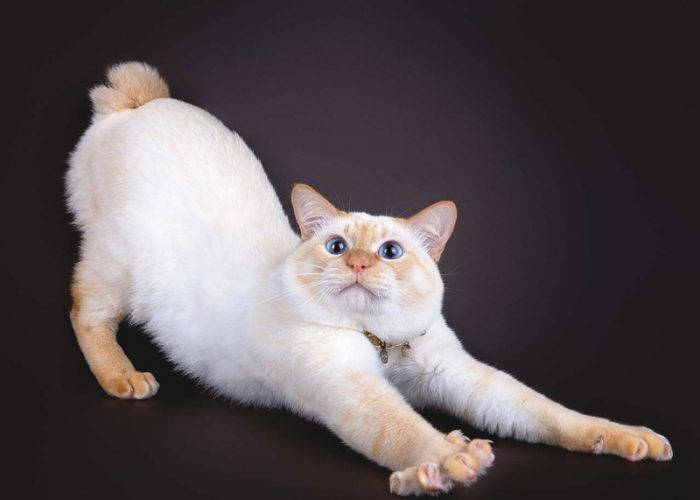
Based on this information we can identify a few simple principles of longevity: a balanced diet, an active lifestyle, a psychologically safe environment, sterilization if necessary, and timely visits to the veterinarian.
According to research, the aging process in cats begins after about four years. Nevertheless, many animals remain active and feel perfectly well into old age.
How do cats and dogs actually age in relation to humans?
If asked how many human years a dog or cat lives in one year of its life, most of us would answer seven.
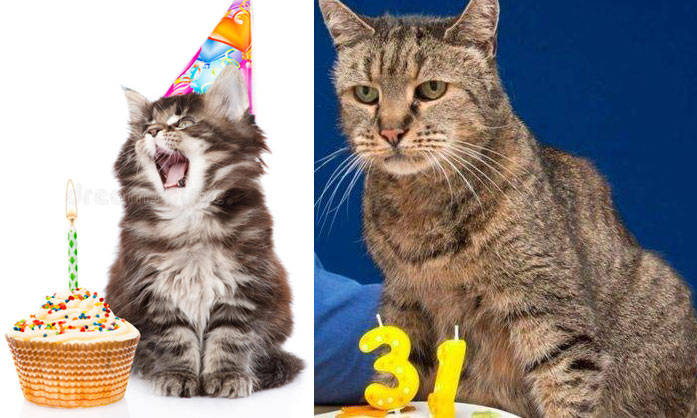
Indeed, it was once believed that, on average, we live 7 times longer than our pets. Hence the calculation. And it still is among people. But if it were that simple, then 20 years for a cat or dog would correspond to 140 years for a human. Unfortunately, there is no such thing among us. But cats and dogs in their 20s and even older are being seen more and more often these days.
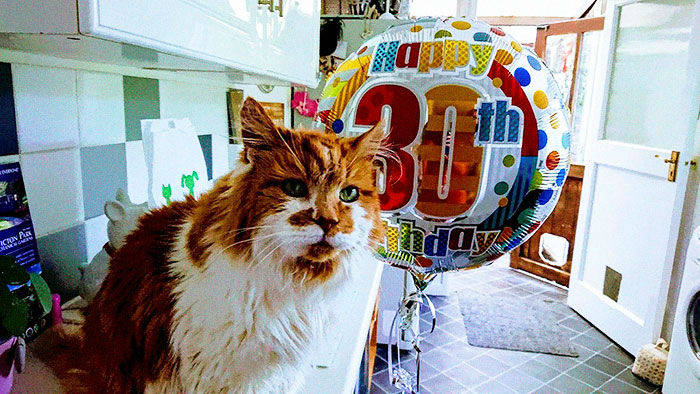
In fact, the real age of animals and humans can be correlated. But the difference will be from 5 to 25 years at different stages of life. For example, the sexual maturity of kittens comes at 6 months, but in adolescents this age begins only at 14 years.

Therefore, the ratio of human to feline age will be different at each stage of development.
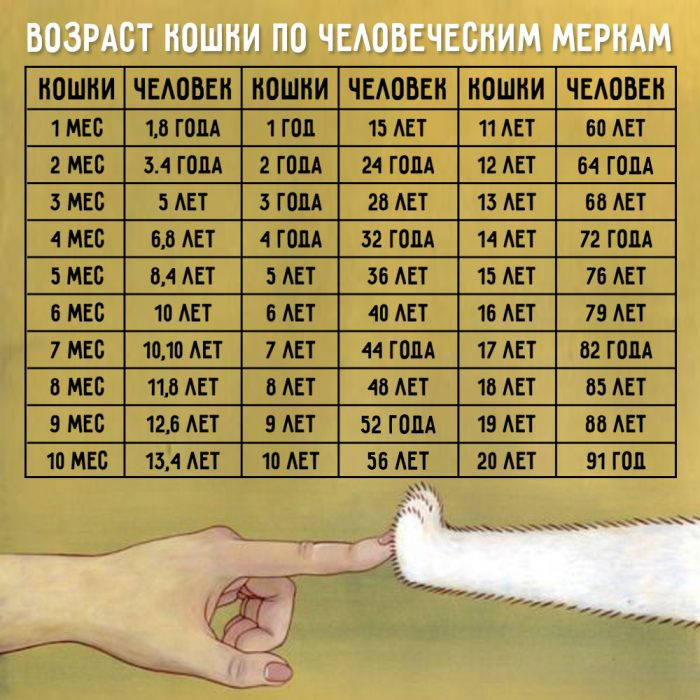
It's the same story with dogs. But their exact age is much more difficult to "humanize" because of the huge difference in weight and size of numerous breeds. Obviously, a tiny spitz and a healthy alabai will not have the same lifespan and develop evenly.

A legitimate question arises: "Why do we need to know how many years our pet has lived by human standards? In fact, according to this indicator, you can accurately judge the health of the pet. We all know that teenage girls absolutely no need to have a mammogram. But after 30 years of age, it's the right time. It's the same with pets. Knowing their age allows you to navigate the characteristics of their physiology, adjust the menu and lifestyle. And this information helps veterinarians in selecting a productive treatment program.
Can you increase a cat's longevity?
Every owner dreams that a furry family member pleases him as long as possible. And in his power to do everything to ensure that the cat will live 15, and even 20 years. What will prolong the life of your favorite four-legged man:
- Annual vaccinations. . A kitten is vaccinated in the first 2-3 months of life and then every year the procedure is repeated. This will protect both the cat at home and the cat that walks on the street from the worst viruses with a high percentage of deaths.
- Routine checkups at the vet . Non-breeds get less disease, so they can be seen at the vet during their vaccinations once a year – just ask the vet for it. Pedigreed animals and animals with chronic illnesses require more frequent visits to the vet – the vet will tell you how often.
- Spaying and neutering . If you are not planning to breed kittens, be sure to spay your pet – this will help avoid many problems, including diseases of the genitourinary system and mental disorders.
- Pay attention to any changes in your pet's behavior . Has your kitty become thirsty? Has she stopped sleeping in her favorite chair? Limps? Does it have strange discharge? Even such little things require careful attention from the owner. The first step in case of suspicion is to call the vet, who will tell you whether you need to take your pet to the clinic or if you can keep an eye on him at home.
- Cleanliness – a guarantee of health. Cats lick themselves, but not enough to maintain hygiene. For example, long-haired breeds cannot cope with the care of a luxurious coat, and it should be combed regularly – so that no parasites or skin diseases appear. You need to wash cat bowls and water thoroughly, disinfect cat trays and wash litter.
- Nutrition must be maintained at a high level. It is not so important what you feed your cat – the main thing is to make sure that the chosen diet suits her. A young cat will benefit from both straight food and quality dry food. But kittens and older cats need a special menu, which cannot be cheap. So before getting a cat, think about the fact that it will require more expense in old age 95% of the time than it did when it was young.
- Treat the cat as a family member . Consider the pet's personality and needs. If she does not like being left alone it is not a good idea to leave her in the apartment all day. And vice versa – if the cat likes solitude, respect its personal space. There are many such points, and if you do not pay attention to the psychological state of the animal, it will be constantly sick and will not live too long.
Long-livers in the cat world
You always want to believe that a pet will be the happy exception and turn into the smartest/obedient/beautiful/healthy/longest-living cat in the world. And indeed, it does happen sometimes – and it's not that rare. But some cases are like a miracle.
Long-lived breeds
Before getting a purebred cat, it is advisable to find out what diseases it is prone to and how many years it lives on average. Breeds that easily live 18-20 years include:
Their longevity is due to good genetics and good health. However, the most common "breed" in the world, the common yard cat, can be added to this list. Breedless moustaches easily break records, living up to 20 years with good care and absence of diseases.
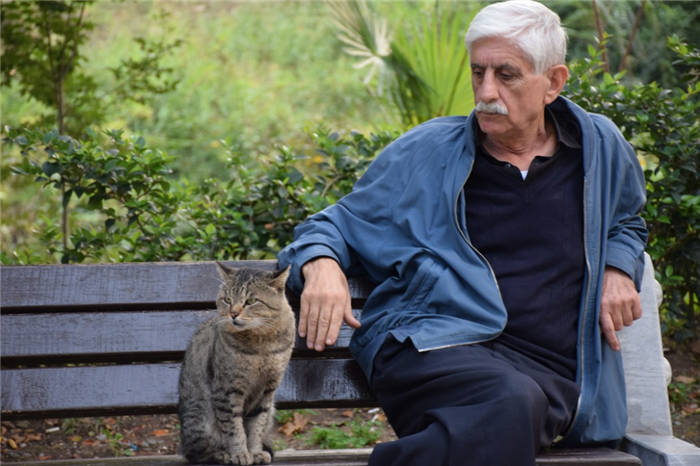
Record breakers
There are two cats in the world, which overcame 45 years – but they both are not registered in the Guinness Book of Records, because there is no official confirmation of their age. But here are the animals that have earned world record-breaking recognition for longevity:
This is not a complete list of cats who have lived 30 years or more. There are numerous mentions of other long-lived pets that have passed the 25-year mark. So the long life of a furball is not so rare, and you can only be happy about it.
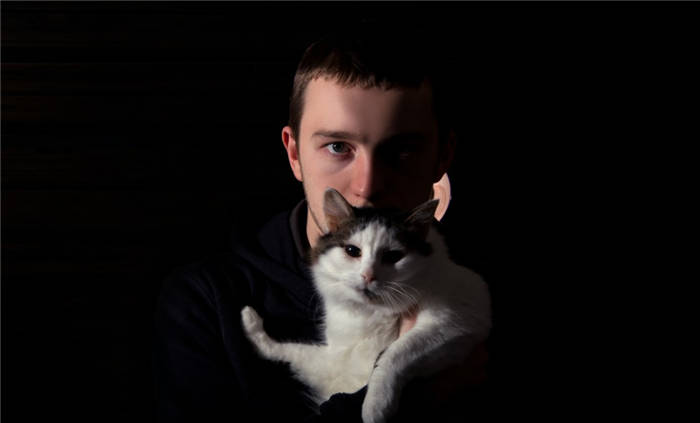
To determine a pet's age by human standards at home is quite a difficult but doable task. Even a superficial knowledge of anatomy will help – and then the degree of maturity can be determined by the condition of the mouth, hair and musculoskeletal system. Behavioral and mental abilities will help clarify this value. For those who prefer an exact science, formulas for calculating the number of years based on available data will be useful.
How to prolong a cat's life
- Self-walking. Straying should be avoided, and in urban settings letting a cat out of the house unattended is doubly dangerous. Such straying often ends in mutilation, incurable infection (viral leukemia, immunodeficiency) and death. It is better to fence the garden plot so that the cat cannot leave its limits, or to arrange a spacious aviary.
- Nutrition. The diet should be fresh, balanced, appropriate to the age of the animal. Industrial food should be chosen at least premium class. If ready-made food for some reason is not suitable, the cat should be cooked separately, you can not feed it with food from the human table.
- Regular vaccinations. Vaccination is necessary for all pets, including those that don't leave the house (the infectious agent can get in from the outside, from the owner's shoes or clothes).
- Breeding control. It is best to have the pet neutered. In fertile cats do not allow births more often than once every 1-2 years (not before the age of 2 years and not later than 6-7 years).
- Veterinary control. At the first signs of malaise, the pet should be seen by a doctor. Elderly cats are recommended annual preventive check-ups, including a general examination, blood, urine and stool tests, and consultation with a cardiologist.
- Habitat conditions. A cat should have a resting place where it won't be disturbed, and it should have enough toys for active play. Toilet litter box should be placed in a secluded place, keep it clean.
Compliance with the rules of maintenance, love, creating a calm and friendly atmosphere in the house – the key to a happy and long life of the pet.
How old are the cats and how to calculate their age
How long do cats live? On average, a domestic cat lives 12-15 years. Homeless and street animals live an average of 3-5 years. There is virtually no gender difference in the life expectancy of cats and cats.
How long do neutered cats live? Neutered cats live 2-3 years longer if they don't have genetic diseases. Neutered cats also live longer.
How long do British cats live? British cats are among the long-living cats. They live an average of 15 years, and some pets – more than 20 years. Olesya Pukhova , author of the book "British Shorthair Cats", specifies that the British mature very slowly. Only at the age of 5 years they reach their full maturity.
How long do sphynx cats live? Sphynx cats have poor health, so they do not live long. Their life expectancy reaches an average of 9-14 years, under favorable conditions – 15-18 years.
Cats, like people, have their own periods of life: childhood, adolescence, formation, reproductive age, old age. The stages of their lives are as follows:
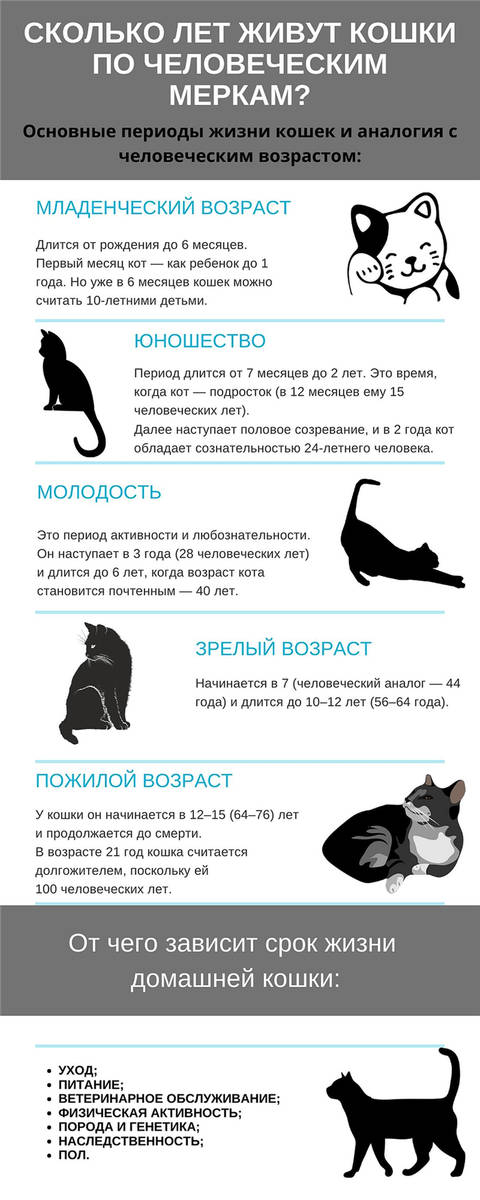
- Kittens are completely dependent on mother's milk for 8-10 weeks. Then they switch to other foods and become independent.
- Puberty occurs in cats at 8-10 months, in cats at 6-8 months.
- Reproductive age in cats lasts throughout their lives. When giving birth to elderly cats, there is an increased risk of death.
How do you count a cat's age? If you compare a cat's age to a human life, 1 human year equates to 7 cat years. Cats age faster in their early years, so the "7 year rule" does not reflect the actual picture. As a result, a cat's life by human standards looks like this:
- In 1 year, a cat lives virtually 15 human years and goes from childhood to adolescence.
- During the second year of life, the cat reaches puberty and begins to reproduce (puberty and the beginning of reproductive age), which equates to 24 years of human life.
- Starting from the third year of life, cats can add 4 years of human life each year.
- A cat reaches old age at 11-12 years, which equates to 60-64 years of human life.
- If a cat lives more than 12 years, it passes into old age and reaches the advanced human age of 75-90 years. Long-lived cats that have lived more than 20 years can claim to be 100 years human.
What does the longevity of cats depend on
The longevity of cats depends on many factors. These include the cat's breed, lifestyle (domestic or stray), health, nutrition, and care.
Pedigreed house cats often live shorter lives than non-breeds. It all depends on immunity and resistance to hereditary and viral diseases. Breeds of long-living cats include Maine Coon, Bengal, Russian Blue, Siamese, Burmese, and ragdoll, who live an average of 20-23 years.
If the cat lived in the house and then ended up on the street, its life is in mortal danger. Such a cat will not be able to survive in extreme conditions, getting food and warmth. The only salvation is to nestle closer to a person near a house or a cafe.
The life of street cats is subject to other dangers. They are not afraid of hunger or cold, but they can die under the wheels of a car or other force majeure. Many street animals die without vaccination against viral diseases and invasion of ectoparasites.
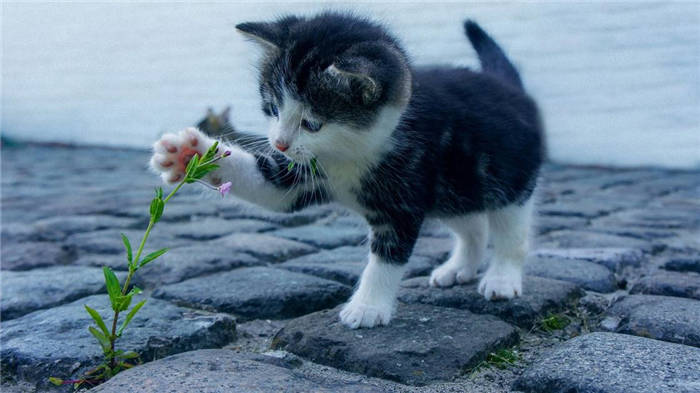
Dreaming of a long-lived domestic cat, create all conditions for a better quality of life of the cat:
- Feeding. Choose a suitable diet with sufficient vitamins, proteins and micronutrients. Do not mix dry and natural food. Feed pets on a schedule, do not overfeed. Give kittens four to six meals a day, adult cats transfer after one year to two meals a day.
- Home environment. Cats are social animals. They love affection, care and become attached to people. The animal should not be left alone for long periods of time, handed over to other people. Stress reduces the cat's immunity and leads to its early death.
- Care. Kittens are taught from childhood to be orderly and clean. A pet should have its own place, a scratching post, bowls for food and water, a litter box, or two, as advised by Rosvita Berger, author of "Raising Cats and Understanding Their Behavior. Cats are brushed, bathed occasionally, have their nails shined, and have their ears, eyes and teeth cleaned.
- Health. Cats must have vaccinations and preventive checkups at the vet to make sure they don't miss any health problems. Gill Deborah , author of the book "Cats: a mini-encyclopedia", advises in the first place to vaccinate cats against dangerous diseases – enteritis and influenza. The animal is given special funds against worms and ectoparasites. If you do not plan to breed kittens, be sure to spay the cat and neuter the cat.
How to determine the exact age
To know exactly how old the cat is, it is better to show it to a veterinarian. But you can determine the age yourself by reference signs. One of the most reliable indicators is the condition of the teeth.
Teeth won't help you determine the exact date of birth of your four-legged friend, but they are still an excellent indicator of age. Key milestones in dental development:
- A kitten's first teeth appear two to four weeks after birth.
- Permanent white teeth appear around four months later.
- Yellow spots, also known as tartar, on some teeth may mean that a cat is one to two years old.
- If the stains appear on all the teeth, the cat is probably three to five years old.
- Missing teeth are usually a sign of a solid age – 10 to 15 years old.
But keep in mind that some cats may have worse teeth than their congeners, regardless of age.
Now you know how many years a cat lives by human standards. But the number of years lived may be more: feed your cat properly, give him quality care, and be sure to have him examined by a veterinarian.
In our catalog you will find a large assortment of products for your pets.






